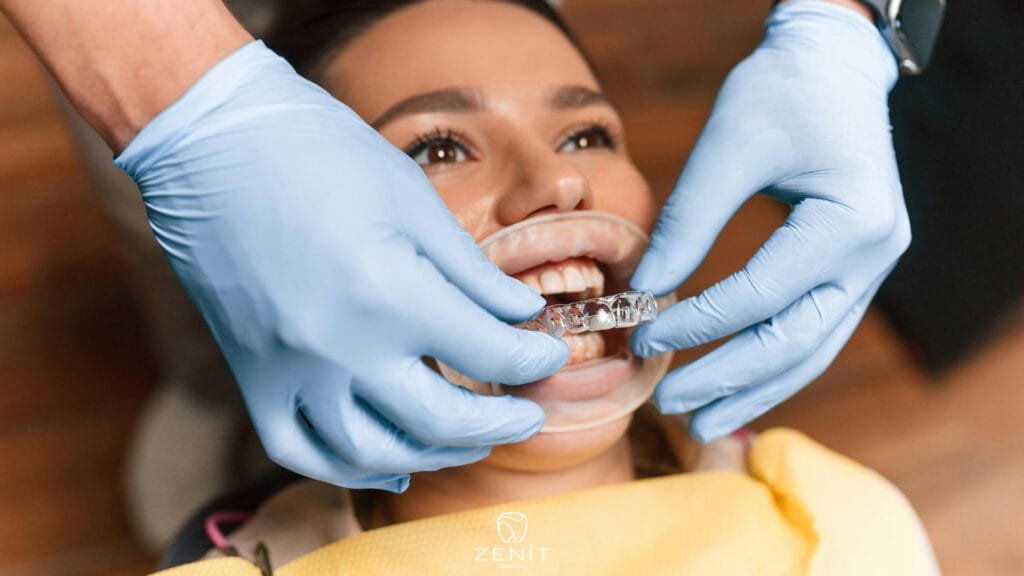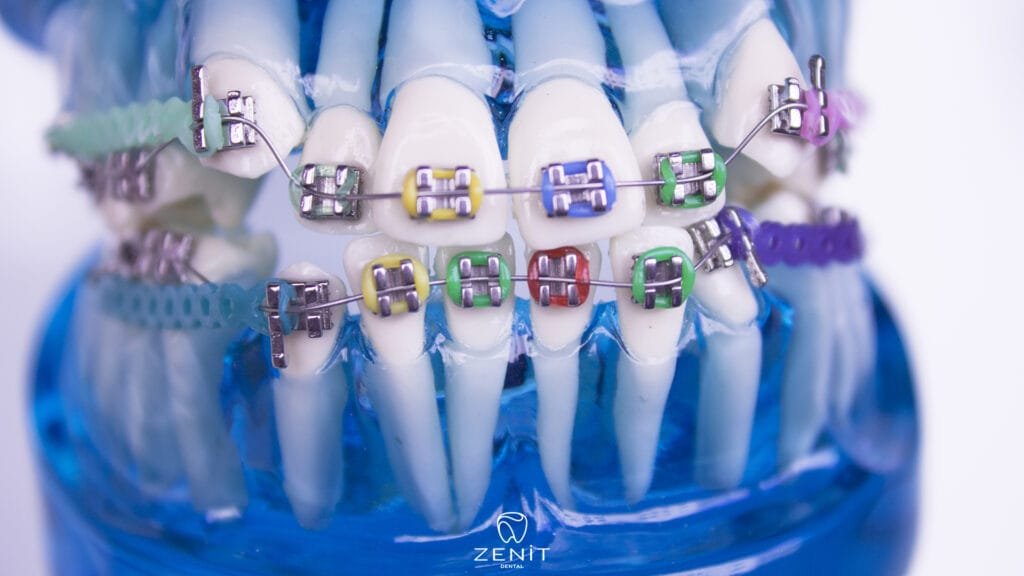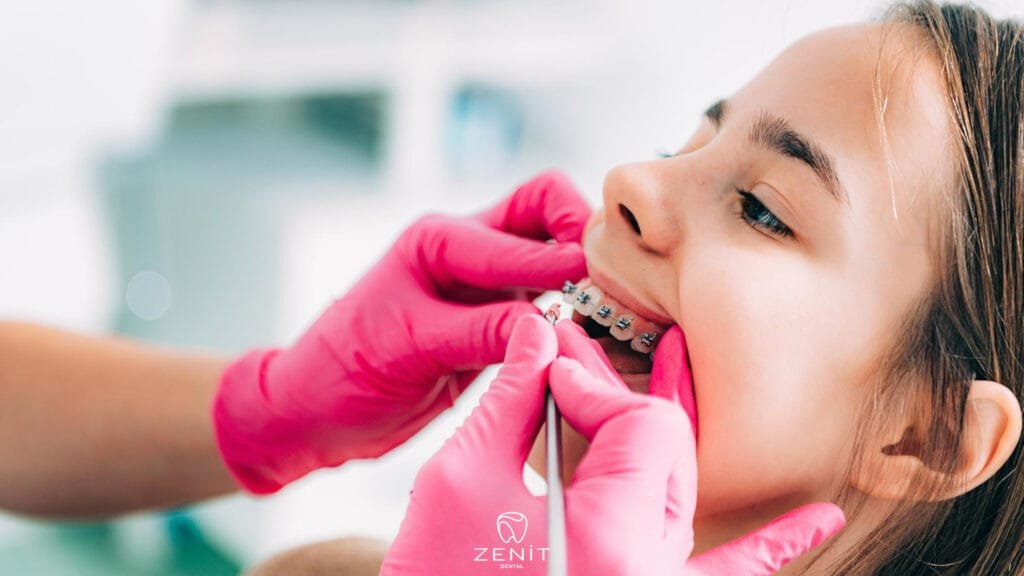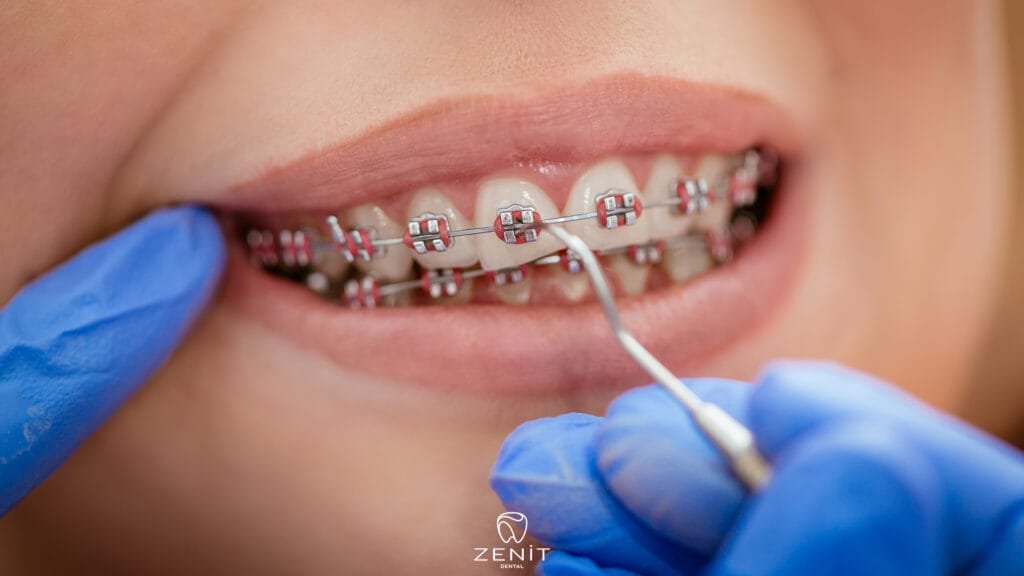Orthodontic Treatment
A successful smile starts with healthy and straight teeth. Teeth, which play an important role in our appearance, are not only an aesthetic factor but also an indicator of our general health. However, for many people who lack natural straightness, orthodontic treatment is an effective way to solve this problem.
Orthodontic treatment is a branch used to straighten teeth, improve the jaw and facial structure, and generally improve oral health. So, what is orthodontic treatment and how does it work?
What is Orthodontic Treatment?
Orthodontic treatment is not only about the proper alignment of teeth and jaws, but also enables individuals to have a better smile in terms of health and aesthetics. Proper alignment of teeth is not only an aesthetic concern, but is also extremely important for chewing function, speaking ability, and overall oral health. Orthodontic treatment can be carried out by various methods:
- Metal Brackets: Traditional metal braces are metal pieces that are glued onto the teeth. These brackets are used with wires and fittings to help pull teeth into their correct position. Nowadays, metal braces have become smaller and less noticeable.
- Porcelain Brackets: Porcelain brackets are made in a color closer to the color of the teeth to provide a less noticeable appearance. Therefore, it is a popular option for individuals with aesthetic concerns.
- Clear Aligners: Clear aligners are a removable and invisible alternative to traditional braces. Each tray is specially designed to allow gentle movement of the teeth. These aligners usually come in a range of shapes, each slightly different from the last. In this way, the teeth are shifted to the desired position over time.
- Lingual Braces: Lingual braces are brackets that are bonded to the back surface of the teeth, making them invisible from the outside. This may be an ideal option for people with aesthetic concerns.
The duration of orthodontic treatment may vary depending on the individual’s initial condition, the complexity for which treatment is needed, and the method used. But usually treatment can last from several months to several years. At the end of treatment, the individual’s teeth will be properly aligned and have a healthy bite, significantly improving overall oral health and quality of life.
What are the Benefits of Orthodontic Treatment?

The benefits of orthodontic treatment are diverse and can significantly improve individuals’ overall health and quality of life. Here is a more detailed explanation of some of the benefits of orthodontic treatment:
- Aesthetic Improvement: Orthodontic treatment not only restores the natural smoothness of the teeth, but also provides a smile that is compatible with facial features. This allows individuals to be satisfied with their appearance and increase their self-confidence. Aesthetic development can create a more comfortable and positive impact on social relationships.
- Functional Development: Correctly aligned teeth improve chewing function and increase speaking ability. Additionally, a proper bite ensures even teeth distribution, which helps prevent problems such as wear and tear. Additionally, properly aligned teeth and jaws can prevent or reduce jaw joint problems.
- Oral Health: Orthodontic treatment involves correcting jams or gaps between teeth. This allows for better teeth cleaning and prevention of tooth decay and other oral health problems. Additionally, properly aligned teeth reduce the risk of gum disease and improve overall oral hygiene.
- Long-Term Investment: The benefits of properly aligned teeth are generally long-term and permanent. Therefore, orthodontic treatment can be viewed as a long-term investment to improve health and quality of life for individuals. A good orthodontic treatment allows individuals to have a healthier oral structure throughout their lives and helps prevent potential problems that may occur in later ages.
What is the Orthodontic Treatment Process?
Orthodontic treatment usually consists of several stages:
- Examination and Diagnosis: The first step is a detailed examination by an orthodontist. The condition of the teeth and jaws is evaluated and the appropriate treatment plan is determined.
- Creating the Treatment Plan: The treatment plan is personalized according to the individual’s needs and preferences. At this stage, the appliances to be used and the duration of treatment are determined.
- Treatment Process: The treatment process may vary depending on the selected appliance. Metal brackets, clear aligners or other appliances may need to be adjusted and checked regularly.
- Evaluation of Results: At the end of the treatment process, the condition of the teeth and jaws is re-evaluated and the success of the treatment is evaluated.
What are the Types of Orthodontic Treatment?

Orthodontic treatment can be performed by various methods according to different needs and preferences. Let’s look at the detailed explanations of orthodontic treatment methods…
- Traditional Braces: Traditionally the most widely used method. Metal brackets consist of small metal pieces that are glued to the front surface of the teeth. These brackets are connected to each other through wires and fittings and ensure the alignment and straightening of the teeth. Nowadays, metal braces have become smaller and less noticeable, making them more acceptable for individuals with aesthetic concerns.
- Clear Aligners: Clear aligners are a removable and invisible alternative to traditional braces. Each tray is specially designed to allow gentle movement of the teeth. These aligners usually come in a range of shapes, each slightly different from the last. In this way, the teeth are shifted to the desired position over time. Transparent aligners are an ideal option for individuals with aesthetic concerns because their invisibility makes the treatment process less noticeable.
- Lingual Brackets: Lingual brackets are brackets that are glued to the back surface of the teeth. In this way, brackets become invisible from the outside and reduce aesthetic concerns. However, the use of lingual braces can cause some discomfort on the tongue as they are bonded to the back surface of the teeth and therefore may not be suitable for some people.
- High-Tech Appliances: With developing technology, appliances that are less visible or provide faster results are being developed. For example, many orthodontists offer faster and more effective treatments using special digitally designed appliances. These types of appliances can offer a more comfortable treatment experience compared to traditional braces or clear aligners. These appliances are often custom designed to suit the individual’s needs and treatment requirements.

To summarize, orthodontic treatment is a very effective method in straightening teeth and improving oral health. This treatment provides many benefits not only in terms of aesthetics but also in terms of functionality and health. There is an orthodontic treatment option to suit each individual’s needs and preferences, ensuring that treatment is personalized and enabling individuals to get the most out of the treatment process.
From an aesthetic perspective, orthodontic treatment can increase individuals’ self-confidence and help them achieve a more attractive smile. In addition, correctly aligned teeth improve chewing function, increase speaking ability and protect oral health. Additionally, properly aligned teeth are easier to clean and reduce the risk of oral health problems such as tooth decay.
Orthodontic treatment offers many different options, which means everyone can find a treatment plan that suits their needs and preferences. A variety of options are available, from traditional metal braces to clear aligners and lingual braces. In addition, new appliances that emerge with developing technology can make the treatment process more comfortable and effective.
However, it is important to consult a specialist before starting treatment. A dentist can evaluate an individual’s condition, recommend appropriate treatment options, and provide information about the treatment process. Obtaining an expert opinion ensures that the treatment process is successful and effective and helps the individual achieve their health and aesthetic goals.






